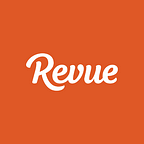Revue’s note: This post is part of a series on secrets by newsletter experts. It was written by Jerry Vermanen. Jerry is a data journalist from The Netherlands. His daily work is at Pointer, a data journalism website and tv programme by Dutch public broadcaster KRO-NCRV. He is also author of his newsletter “Klikdinges” (which translates loosely to Clickything).
Why would someone ever follow me through a newsletter? A small amount of imposter syndrome is known to everyone, I presume. It’s also the reflex I had when I was considering starting my own newsletter called Klikdinges just 2 years ago. Now I’m 54 editions and almost 500 subscribers in. I want to walk you through some of my considerations when starting Klikdinges and sum up some of the benefits it yielded me.
Starting Klikdinges actually was a self-imposed assignment. To keep learning and stay on top of my game. I know some other colleagues who send their own newsletters and saw how they benefited from it. But then again, why would anyone follow my bi-weekly writings on the things I do and like?
If I’ve learned anything in the past few years, it’s that these kinds of thinking patterns (“why would…”) can paralyze any cool project before it even begins. This time I just thought: sign up for an account and write my first newsletter ASAP. Build a community. And if it fails? Just go on to the next project. If just a few persons sign up for my newsletter and it’s not enough, well, not a lot of persons saw my failure. And even then, who cares? Trying something out of your comfort zone should always be rewarded with encouragement.
Long story short, this is what happened.
Of course, it’s by far not the most popular newsletter in The Netherlands. But on a personal level: it’s an amazing thought that almost 500 people want to keep up-to-date on my work and thoughts. Looking back, it should’ve been a no-brainer to start Klikdinges.
How a newsletter on data journalism connects me to my readers
I haven’t even told you why I started Klikdinges in the first place. Let me sum up all the cool thing I have encountered.
The main benefit of writing my own newsletter was obvious from the very start: staying on top of my work as a data journalist. When you’ve got a few hundred persons in your subscriber list (and some of them whom you hold in the highest regards), you don’t want to disappoint them by sending sloppy work. Writing a newsletter forces me to read a lot of other newsletters, articles, visualisations, etc. I’m better in my daily work, thanks to my newsletter.
After sending a well-informed newsletter, a lot of former colleagues and friends respond to my writings. Some of them I talk to regularly, others I haven’t spoken in years. I never thought a newsletter could reconnect me to an old friend, but it did.
One funny anecdote on the relationship between newsletter writer and subscriber: one of the first replies came from another journalist I vaguely knew. His feedback: “Too many urls (and many aren’t about data visualisations). Don’t use awesome all the time. And you’re writing like you’ve used a lot of drugs. Enthusiasm is great, but this is too much.”
Ouch, that hurt. But here comes the twist: he didn’t know this feedback wasn’t anonymized. And I’m happy for it. As you might know: most feedback sounds harsh, but it is mostly coming from someone with good intentions. Actually, he’s one of my most loyal readers. We correspond regularly, exchanging cool project and articles, and talking about D&D.
A career booster
Apart from the community aspect, writing a newsletter also helps me in my career as a young journalist. One of the toughest things after your graduation is finding a job. And after that, finding a job you actually enjoy. And then, keeping that job.
Through my newsletter I’ve received a lot of invites from persons to get a cup of coffee. Sometimes just talking about my job as a data journalist. Helping some students with their career path. Sometimes talking to an editor on how to start your own data journalism team. Sometimes getting a job offer (and being absolutely awkward about this).
I’ve got a few invitations to speak at conferences. And well, maybe I would’ve gotten these opportunities without my newsletter. Who knows? But it never hurts to be in the public eye as an expert on data journalism every two weeks. I’m convinced you’re only an expert if you’re being considered an expert by others. And getting into the mailboxes of your readers, colleagues and friends is one great way of building up your reputation and network.
My advice for anyone considering a newsletter: shake off your imposter syndrome and just start. That’s the most difficult part. Talk to your readers if they respond (even if you feel offended at first): maybe you build up a valuable relationship.
Upgrade your newsletter?
Did you find this article helpful? And do you think it’s time to upgrade your newsletter? Have a look at Revue, the editorial newsletter tool for writers and publishers.
Looking for more advice?
This post is part of a series on secrets by newsletter experts. You might also want to check out:
- Funding a newsletter with voluntary payments: the tricky ‘fourth way’ (by Martin Bryant)
- The do’s and don’ts of tone-of-voice when writing an editorial newsletter (by Liza Jansen)
- Where to Publish, When (by M.G. Siegler)
- Six Email Metrics That Matter (That Aren’t Open Rate) (by Dan Oshinsky)
- Newsletters are not a marketing tool, but a journalistic product (by Elger van der Wel)
- The Secret To A Successful Newsletter Is Consistency (by Josh Spector)
- Newsletter Research (by Joseph Lichterman)
- How to start your own good newsletter (by Paul Jarvis)
